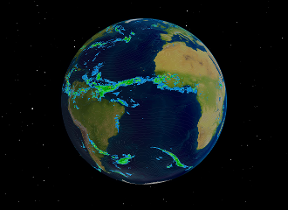Understanding the Met Office Mountain Forecast: Your guide to staying safe
Mountains are among the most breathtaking and rewarding places to explore in the UK, but they can also be some of the most unpredictable and hazardous environments.
Weather conditions can change rapidly, sometimes within minutes, and vary dramatically from one peak to the next. That’s why the Met Office Mountain Weather Forecast is an essential tool for anyone planning to venture into the hills.
Whether you're a seasoned mountaineer or a weekend walker, checking the mountain forecast before you set off can make all the difference between a safe, enjoyable outing and a potentially dangerous situation.
What is the Met Office Mountain Forecast?
The Met Office provides detailed forecasts for key hill and mountain areas across the UK. These forecasts are tailored specifically for outdoor enthusiasts, walkers, climbers, and mountaineers, offering vital information to help you plan and prepare for your trip.
Forecasts are issued daily before 6pm and cover:
- The evening period
- The next two full days (midnight to midnight)
- A brief outlook for the following three days
They are updated again in the early hours of the morning, so it’s always worth checking again on the day of your trip for the latest updates.
Amber and yellow thunderstorm warnings are in place across the UK tonight and tomorrow ⚠️⛈️
— Met Office (@metoffice) June 13, 2025
Alex Deakin explains what that means in this clip from Weather Studio Live 👇
If you missed it earlier, you can catch up with the full episode here: https://t.co/vntivMDTzS
Why It matters
Recent surveys show that while nearly half of UK residents consider themselves outdoor enthusiasts, nearly a third have found themselves in dangerous situations due to poor weather planning. The Met Office Mountain Forecast aims to reduce these risks by providing accessible, user-friendly, and highly detailed weather information.
Key features of the forecast
The mountain forecast includes several features designed to help you make informed decisions:
-
Weather Tables: These show wind speed, direction and gusts, temperature, “feels like” temperature, and freezing level at 300m height intervals. This allows you to understand how conditions change from valley to summit.
-
Hazard Impact Statements and Videos: Developed in collaboration with the Scottish Avalanche Information Service and Mountain Training, these provide clear explanations of weather hazards and their potential impacts. Videos help visualise what severe weather will look and feel like on the ground.
-
Expanded Regional Detail: Scotland now benefits from four distinct mountain regions instead of two, offering better coverage in the southwest and southeast.
-
Improved Accessibility: The forecast is now easier to navigate, with a cleaner layout and availability across digital platforms. You can also download or print the forecast for use on the go.
-
Simplified Language: Clearer titles and terminology help users quickly find the information they need.

READ MORE: Met Office weather warnings: How and why they are issued
Reading the sky: Spotting weather changes
Even with the best forecast, conditions can change quickly. Learning to read the sky can enhance your safety and enjoyment. For example:
-
Cumulus Clouds: These can develop rapidly on warm days, potentially leading to thunderstorms. Watch for cauliflower-shaped tops or fibrous, anvil-shaped clouds, signs of heavy rain or lightning.
-
Cirrostratus and Altostratus: These high, wispy clouds and hazy layers often signal an approaching warm front and worsening weather within 12–24 hours.
-
Cloud Movement: Fast-moving clouds over summits suggest strong winds. Cloud bases that lower quickly may indicate incoming fog or rain.
-
Cold Fronts: These are harder to spot but often bring a sudden drop in temperature, a shift in wind direction, and heavy rain.
With thunderstorm warnings in the forecast, here are some simple things you can do to stay #WeatherReady and keep yourself and others safe during a thunderstorm 🔽https://t.co/HTwE6MvjLm
— Met Office (@metoffice) June 11, 2025
The mountains are a place of beauty and challenge, but they demand respect. Always check the Met Office Mountain Forecast before heading out, and keep an eye on the sky for signs of change. A sunny morning can quickly turn into a stormy afternoon, and being prepared can make all the difference.
So next time you head for the hills, pack your waterproofs, bring your map and compass, and let the Met Office Mountain Forecast be your guide to a safer, more enjoyable adventure.
Keep up to date with weather warnings, and you can find the latest forecast on our website, on YouTube, by following us on X and Facebook, as well as on our mobile app which is available for iPhone from the App store and for Android from the Google Play store.





